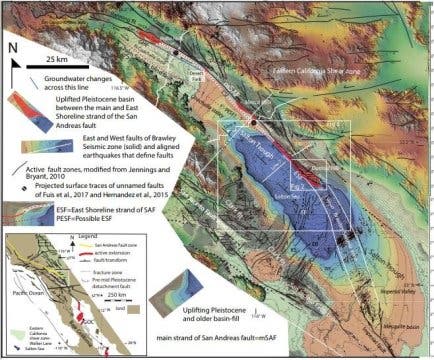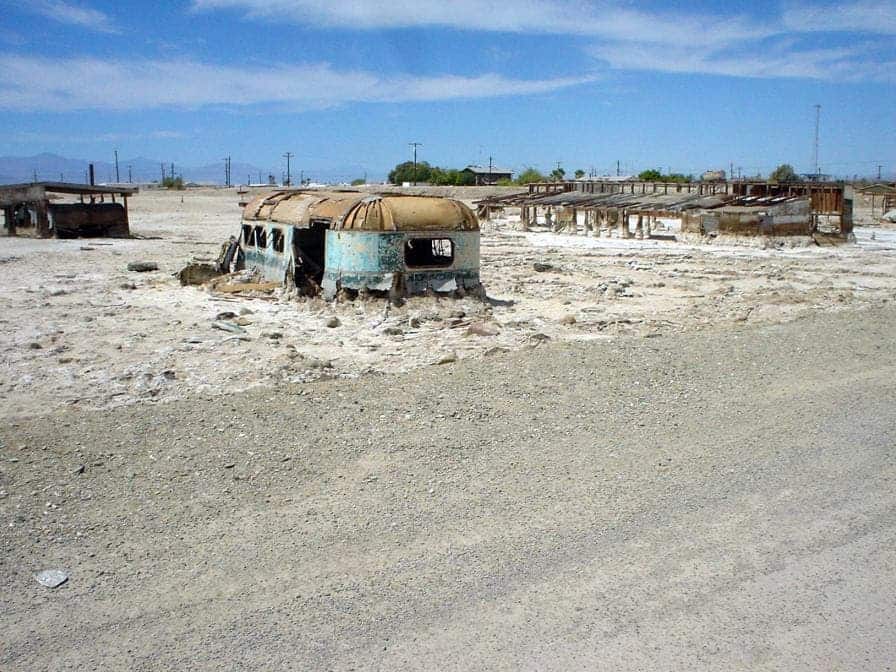In 1905, the small town of Salton, along with nearby tribal lands, suffered an unfortunate fate: it was completely flooded. Swollen with heavy rainfall and snowmelt, the Colorado River surged into a dry lake bed along California’s San Andreas Fault, submerging Salton and the surrounding area. But this flood did more than cover up a small town — it covered up a key, seismically active stretch of the San Andreas Fault, hiding its volatility away from human eyes.
More than a century after these floods, Utah State University geologist Susanne Jänecke began hypothesizing about the location of this fault zone. Although it was obscured by water and sediment, Jänecke took on the painstaking task of documenting the area through a careful geological and geophysical analysis.
Her work, along with USU colleague Jim Evans, Patricia Persaud of Louisiana State University, Dan Markowski and Miles Kenney of California’s Kenney GeoScience, ultimately paid off.
They found that the faulted structure extends way beyond the currently known path of the San Andreas fault, and seems very volatile indeed — meaning it’s a very possible nucleus for a potential earthquake. Furthermore, because the area is so heavily folded and unstable, any earthquake in the area could trigger a cascade of dangerous aftershocks. Because the San Andreas area is already overdue for an earthquake, there’s a valid reason for concern.

Map showing the faults and uplifting late Cenozoic basin fill (gray) of southeastern California. Image Credits: Jänecke et al. and Lithosphere.
“We now have critical evidence about the possible nucleation site of the next major earthquake on the San Andreas Fault,” says Jänecke, professor in USU’s Department of Geology. “That possible nucleation site was thought to be a small area near Bombay Beach, California, but our work suggests there may be an additional, longer ‘fuse’ south of the Durmid Ladder within the 37-mile-long Brawley Seismic zone.”
However, there’s also some good news: even though this earthquake could come in at any moment, the newly discovered area lies farther away from the most populated areas. Also, while the heavily folded structures could trigger a flurry of smaller earthquakes, it could also act like a buffer.
“Fortunately, the northern continuation of the newly identified East Shoreline strand of the San Andreas Fault is farther away from major population centers than we first thought,” Jänecke says. “The fault lies along the eastern edge of Coachella Valley. In addition, the broken rock throughout the ladder structure could damped ground-shaking associated with the next large earthquake.”
Seismologists have repeatedly warned that the San Andreas area may soon be hit by a massive earthquake in the near future.
Journal Reference: Susanne U. Jänecke, Daniel K. Markowski, James P. Evans, Patricia Persaud, Miles Kenney. Durmid ladder structure and its implications for the nucleation sites of the next M >7.5 earthquake on the San Andreas fault or Brawley seismic zone in southern California. Lithosphere, 2018; DOI: 10.1130/L629.1










